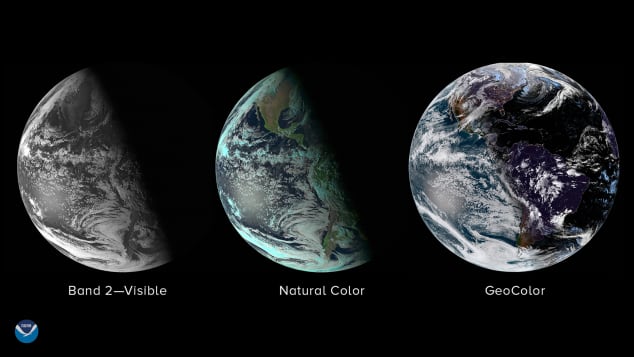
On Wednesday, December 21, 2022, the shortest day of the year (Winter Solstice 2022) and the start of winter will officially begin (well, for a decent chunk of the world anyway). People have been enthralled by how this all operates for thousands of years.
We’ll start by examining the science and exact timing of the Winter Solstice 2022. Then, we’ll look at some long-standing customs and festivals from around the world.
A winter solstice’s time and science
The sun is directly overhead at the Tropic of Capricorn during the winter solstice, which is also the shortest day of the year and the longest night in the Northern Hemisphere.
In the Southern Hemisphere, where just around 10% of the world’s population resides, the situation is the opposite. In nations like Argentina, Madagascar, New Zealand, and South Africa, the December solstice ushers in summer by being the longest day of the year.
Winter Solstice 2022: When does it actually happen?
Typically, but not always, the solstice falls on December 21. Because the solar year (the amount of time it takes for the sun to reappear at the same location as seen from Earth) doesn’t exactly coincide with our calendar year, the date of the solstice might change.
According to EarthSky.org and Farmers’ Almanac, the exact moment of the winter solstice in 2022 will be on Wednesday at 21:48 Coordinated Universal Time (UTC), if you want to be super-accurate in your observations. The time difference from last year is almost six hours.
Here are some examples of when different local times around the world correspond to 21:48 UTC. The vast majority of Asia will observe the winter solstice on December 22 due to time zone variations.
- Tokyo:6:48 a.m. Thursday
• Hanoi, Vietnam:4:48 a.m. Thursday
• New Delhi: 3:18 a.m. Thursday
• Istanbul: 12:48 a.m. Thursday
• Jerusalem: 11:48 p.m. Wednesday
• Copenhagen, Denmark: 10:48 p.m. Wednesday
• Charlotte, North Carolina: 4:48 p.m. Wednesday
• Winnipeg, Manitoba: 3:48 p.m. Wednesday
• San Francisco: 1:48 p.m. Wednesday
• Honolulu: 11:48 a.m. Wednesday
Where does the winter solstice 2022 have the most impact?
On December 21, the amount of daylight diminishes sharply the closer you are to the North Pole.
With only nine minutes less of daylight than they do on the summer solstice, people in warm Singapore, which is just 137 kilometers (85 miles) north of the equator, hardly feel the change. There, every day of the year is pretty much a 12-hour day, give or take a few minutes.
Paris, which is located at a much higher latitude, has a reasonable eight hours and fourteen minutes of daylight for a brisk promenade along the Seine.
In cold Oslo, Norway, where the sun will rise at 9:18 in the morning and set at 3:12 in the afternoon, there will be less than six hours of meager daylight. Who has a sun lamp?
With only three hours, 54 minutes, and 31 seconds of very feeble daylight, residents of Nome, Alaska, will already be severely deficient in sunlight. However, when contrasted to Prudhoe Bay, Alaska, that is outrageously kind. It is located inside the Arctic Circle and will never experience sunshine.
What event triggers the winter solstice 2022?
The seasons change because Earth’s rotating axis is inclined. Each hemisphere experiences winter when it is slanted away from the sun and summer when it is tilted toward the sun as the Earth revolves around the sun.
winter solstice 2022: Stay put! The Earth is tilted, but why?
Though they do not fully understand how it happened, scientists believe that cataclysmic collisions between the Earth and other objects during the solar system’s formation billions of years ago tilted the planet’s axis.
winter solstice 2022: What more seasonal changes do we observe?
The spring and fall equinoxes take place when the sun is directly overhead the equator. Everywhere during those two days, the day and night are about identical in length. The longest day of the year and the start of summer in the Northern Hemisphere occur on the summer solstice when the sun’s rays are the furthest north over the Tropic of Cancer.
Traditions and festivities related to the winter solstice
It is not surprising that many cultures and religions observe a celebration that coincides with the return of longer days, whether it is Christmas, Hanukkah, Kwanzaa, or other paganism festivals.
The first day of winter was celebrated with elaborate rituals by prehistoric peoples whose survival depended on their ability to accurately predict seasonal patterns. These occasions represent the chance for regeneration spiritually.
According to Maria Kennedy, assistant teaching professor in the department of American Studies at Rutgers University, “Christmas inherits many of its customs and presumably its date on the calendar from the pagan Roman festivals of Saturnalia and Kalends.”
Kennedy, an expert on Christmas studies, noted that Kalends began on January 1 and Saturnalia began on December 17.
Kennedy cited scholarly studies when he claimed that although these holidays’ activities were denounced by the early Christian church leaders, their appeal persisted. Even though the Gospels don’t give a definite date for Jesus’ birth, the Christian celebration of Christmas eventually fell around the same time in the calendar.
Here’s more on some of those ancient customs:
Alban Arthan
According to the Farmers’ Almanac, “Alban Arthan” is Welsh meaning “Light of Winter.” It might be the world’s oldest seasonal festivity. The winter solstice is seen as a period of death and rebirth in Druidic customs.
The Alban Arthan festival is connected to the prehistoric landmark Newgrange, which was erected in Ireland in approximately 3200 BC.
Saturnalia
Saturnalia in ancient Rome lasted for seven days. Saturn, the Roman god of agriculture, was celebrated.
The populace enjoyed Mardi Gras-style carnival-style events and even put off starting wars. Temporary liberties were granted to slaves, and moral constraints were relaxed. The third and fourth centuries AD saw the continuation of Saturnalia.
Dongzhi
Not only ancient Europeans observed the yearly event. There are ancient Chinese traditions at the foundation of the Dongzhi Winter Solstice Festival. “Extreme of winter” is roughly how the name is translated.
They believed this to be the pinnacle of yin (from Chinese medicine theory). The longest day in winter corresponds to Yin, which stands for darkness, cold, and stillness. Dongzhi signifies the return of yang and the gradual ascent of warmth and light. In various East Asian societies, eating dumplings is frequently associated with celebration.
Celebrations
The winter solstice is traditionally celebrated at festivals in many regions of the world. Here is a handful of them:
Montol Festival
The town of Penzance on the southwest coast of England reintroduced the beautiful custom of a Cornish processional, along with dancing, mask-wearing, singing, and more. Penzance is better renowned for pirates than the solstice.
Stonehenge
Stonehenge is the most well-known solstice celebration location in the UK. Visitors typically enter the tall, enigmatic stone circle during the winter solstice for a morning ceremony led by local druid and pagan groups.
According to the English Heritage Society, the event will take place on December 22nd, 2022. It will have a live YouTube channel broadcast.
Lantern Festival
In Canada, the Winter Solstice Lantern Festival in Vancouver is a dazzling celebration of solstice customs spanning the areas of Granville Island, Strathcona, and Yaletown.


